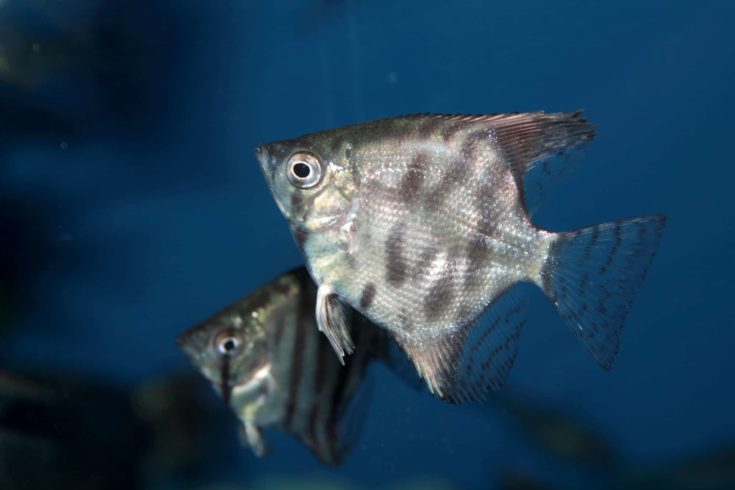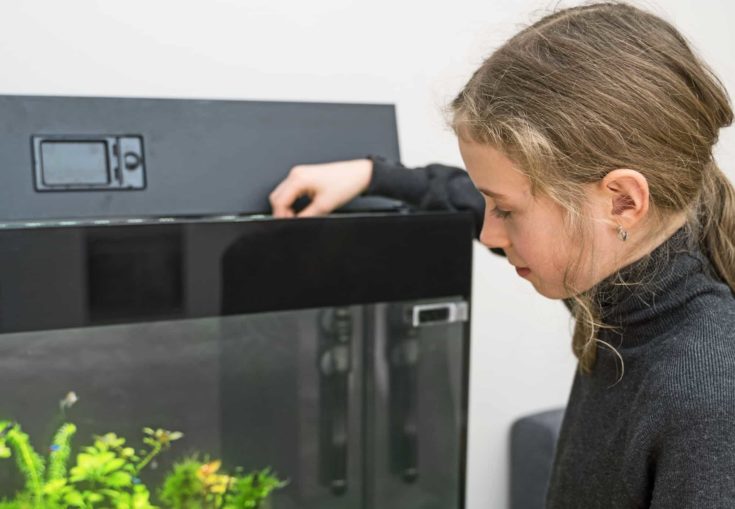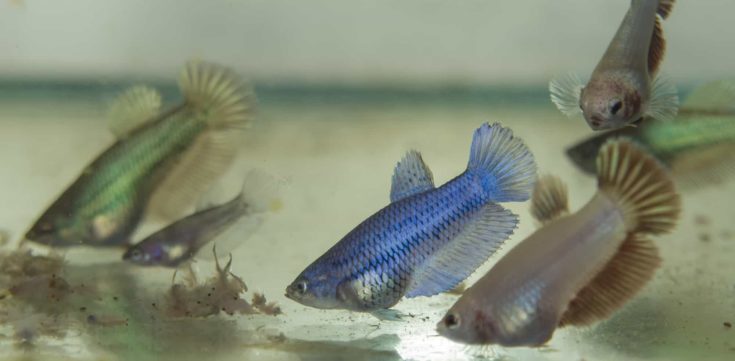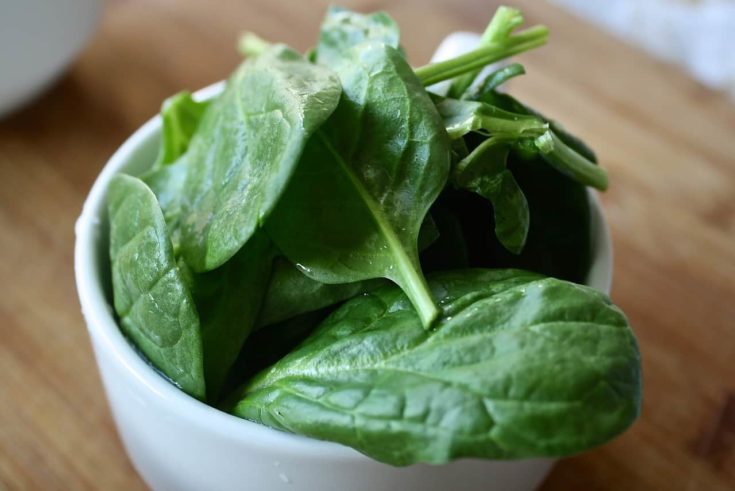We’ve all been there; your beloved fishies are waiting for their breakfast, but you ran out of fish food. And even worse, the fish store is closed. So, what do you do?
Well, fortunately for your hungry fish, you can easily make fresh homemade fish food using high-quality, nutritious fish food ingredients. Whether you have goldfish or tropical species, there’s a DIY recipe to suit your fishes’ needs.
Read this guide to find out how to make fish food.
Advantages Of Making Fish Food At Home
When you can buy commercially produced fish food at the fish or pet store, why would you bother making your own at home?
Well, it turns out that there are several advantages of making fish food at home:
- Many commercially prepared fish foods contain artificial colors, flavorings, and preservatives. If you make your own fish food, you know exactly what it contains and that it will always be fresh and healthy for your fish.
- Making your own fish food can save you money, especially as you’re going to be using foods that you would ordinarily throw away.
- When you make your own DIY fish food, you can choose the very best high-protein ingredients for your fish.
- Homemade fish food can be formulated to contain the precise nutrients that your fish need and cater to their specific requirements.
So, although making your own fish food can be time-consuming, you can see that it’s well worth the effort.
What Food Is Right For Your Fish?
It’s important to understand that not all kinds of fish food suit every species. If you offer your fish the wrong type of food, the chances are that they won’t eat it, and the food will fall to the substrate, where it will decompose and damage your water quality.
Basically, some fish are meat eaters, some eat only vegetable and plant matter, and others eat a mixture of both.
What Kind Of Fish Food Should I Make?
So, before you start making fish food, you need to know the dietary requirements of your fish.
Herbivores
Herbivores eat only plant matter, including algae. Many popular cleaning crew fish species are herbivores, for example, plecos.
Omnivores

Omnivorous fish eat both meat and plant matter. Most popular aquarium fish species are omnivorous, including goldfish, gouramis, platies, guppies, and tetras.
Carnivores
Carnivores eat only meat, including other fish and invertebrates. Discus are carnivorous fish.
Can You Give Human Food To Fish?
When you’re considering making food for your fish, you’ll find many of the ingredients you need in your kitchen cupboards, because fish can eat some types of human food!
You can give your fish veggies, meat (with the fat trimmed off), raw eggs, and fruit.

However, whatever food you decide to give your fish, you need to ensure that you don’t include any form of spices or masala as that might harm your fish. So, feel free to use leftover raw meats and cooked veggies to make homemade fish food. Your fish will love you for it!
Types Of Foods That You Can Feed To Your Fish
There’s a wide range of foods that you can feed your fish.
Plant Foods
If you have herbivorous fish, what can you feed them?
There are many plants that you can offer to your fish. Although leafy greens are not found in the fish’s natural environment, these foods provide valuable vitamins and minerals for your fish. Plant foods that you can use include:
- Spinach
- Kale
- Seaweed
- Lettuce
- Spirulina
There are some aquatic plants that make good food for fish, too, such as Egeria densa, Limnophila, and Cabomba. You can buy all those plants in fish and pet stores.
Many kinds of veggies such as zucchini, broccoli, carrots, and small quantities of fruits such as apples and pears can also be given to fish. These foods are packed with nutrients, helping to boost fish health, vitality, and color. Some of the softer varieties of fruit can be fed raw, but it’s best to blanch them first.
Garlic!
Garlic is extremely beneficial for your fish since it contains antibacterial chemicals that can help to keep your fish healthy. The herb also increases the fishes’ appetite, which can be helpful if you want to encourage a fussy feeder to eat more. You can crush the garlic and rub the oil/juice onto the food or mince the garlic and add it to the food.
Meat And Fish
Many carnivorous and omnivorous fish eat fish and fish derivatives, including salmon, tuna, trout, and cod. They will also often eat a fish that has died before you even notice that it’s missing!
Other aquatic creatures can make great fish food. So, include squid, brine shrimp, mussels, and mussel larvae in the food.

Earthworms can make a very nutritious addition to your homemade fish food. However, I don’t advise that you take aquatic worms from ponds or rivers in nature, as they can contain parasites and harmful bacteria that could make your fish sick.
Is Fat Good For Fish?
If you’re feeding your fish meat, trim off any fat first. Too much fat in the fish’s diet can cause liver damage if you overdo it.
Other Foods That You Can Offer Your Fish
As well as all the above foods, you can use flour, corn, and raw eggs in your homemade fish food.
Materials Needed For Homemade Fish Food
Before you begin making food for your fish, get yourself organized, and gather together everything you need.
Here’s what you’ll need:
- Ingredients
- Kitchen scales
- Plastic wrap
- Food blender
- A pan
- Ice cube trays
- A sharp knife
- A freezer
How To Store Homemade Fish Food
The best method of storing homemade fish food is to pour it into ice cube trays. Put the ice cube trays into an airtight container and keep them in your freezer.
If kept in the correct conditions, frozen fish food can keep for up to a year.
5 Easy Homemade Fish Food Recipes
Here are five easy homemade fish food recipes that you can make at home for your fishy friends.
No-Cook Fish Food
This simple fish food recipe doesn’t require any cookery skills and is super-easy to make.

The food contains veggies and meat protein, too, making this an ideal food for tropical omnivorous species and goldfish.
Ingredients:
- Peas – 75g
- Spinach – 75g
- Cucumber – 75g
- Cod – 75g
- Shrimp – 75g
- Gelatine – 268g
How To Make
1. Use a sharp knife to chop all the ingredients into tiny pieces.
2. Put the ingredients into a mortar and pestle if you have one, and grind everything up to create a smooth paste. If you don’t have a mortar and pestle, you can improvise by using a bowl and the back of a spoon.
3. Add a little water to the paste to create a puree.
4. Make up the gelatine mix in a separate dish, following the manufacturer’s guidelines.
5. Add the gelatine to the puree and mix thoroughly.
6. Pure the mixture into ice cube trays and put them into the freezer.
When you want to use some of the food, put a cube into some tank water and allow it to thaw before offering the food to your fish.
Vegetarian Fish Food
This DIY fish food recipe is perfect for herbivores that will benefit from the addition of some extra veggies to their diet.
Ingredients:
- Spinach – 136g
- Cucumber – 136g
- Frozen peas – 136g
- Unflavoured gelatine – 268g
- Oats – 136g
How To Make
1. Begin by blanching all the veggies in boiling water and then allow them to cool.
2. Put the vegetables into a blender and blitz to create a smooth puree.
3. Add the oats to the puree and blitz again.
4. Make up the gelatine in a separate bowl as per the manufacturer’s guidelines.
5. Mix the gelatine thoroughly with the vegetable puree.
6. Pour the mixture into ice cube trays and store in your freezer.
To prepare the food for your fish, put a cube into some tank water until it thaws before offering the food to your fish.
Standard Fish Food
If you keep omnivorous fish, this tasty high-protein food will prove a big hit with your finned friends!
Ingredients:
- Garlic – 68g
- Vegetables (broccoli florets, spinach, cauliflower florets) – 408g
- Water – 1 cup
- Unsweetened gelatine mix – 268g
- Seafood – 68g
- Fish vitamins – one drop
How To Make
1. Start by dicing the vegetables, and then steam or boil them. Allow to cool.
2. Place the cooked veggies in a blender, add the garlic and seafood, and then blitz to form a puree.
3. Now, add the vitamins, and mix well.
4. Make up the gelatine in a separate bowl, following the instructions on the packet.
5. Add the gelatine to the puree and mix thoroughly.
6. Pour the mixture into the ice cube trays and freeze.
When you want to feed your fish, add a cube to some tank water and thaw before feeding your fish.
Meat Fish Food
This homemade fish food substitute is ideal for carnivores. We’ve included some veggies too, to add fiber and extra vitamins to the food, which also makes this recipe perfect for omnivorous fish.
Ingredients:
- White fish – 136g
- Shrimp – 136g
- Vegetables (broccoli, carrots, cauliflower) – 136g
- Gelatine – 268g
How To Make
1. Dice the vegetables, and then steam or boil them. Allow to cool.
2. Put the vegetables into a blender and blend to create a puree.
3. Blend the shrimp and white fish to form a smooth paste.
4. In a separate bowl, make up the gelatine, following the instructions on the packet.
5. Add the gelatine to the pureed meat and vegetables.
6. Pour the mixture into the ice cube trays and freeze.
Thaw a cube in some tank water and then feed it to your fish.
Protein Fish Food
This homemade fish food is a high-protein recipe that’s ideal for boosting the growth of juvenile fish and conditioning fish that you’re preparing for breeding.
Ingredients:
- Salmon – 200 g
- Raw shrimp (without tail) – 1000g
- Frozen peas – 500g
- Spinach – 500g
- Carrots – 300g
- Garlic – 2 cloves
- Gelatine – 544g
How To Make
1. Finely dice the vegetables and seafood and blend together to create a smooth paste.
2. Add 3.5 pints of water to a pan and add the gelatine. Stir well.
3. Add the vegetable and seafood paste to the gelatine and mix well.
4. Heat the mixture on a low heat for about 45 minutes or until cooked.
5. Once the mixture is cooked, turn off the heat and let it cool.
6. Transfer the food into ice cube trays and put it into the freezer.
Thaw a cube in some tank water and feed it to your fish as required.
In Conclusion
I hope you enjoyed this collection of fish food recipes that you can produce in your own home kitchen.
Homemade fish food can be a great alternative to commercially produced fish food flakes and it’s so easy to make! You can make the food in large batches and freeze it, potentially saving you money in the long run and ensuring that you always have a ready supply of high-quality, freshly prepared food on hand for your fish.
Do you have any homemade fish food recipes that you’d like to share with us? If you do, please put them in the comments box below.